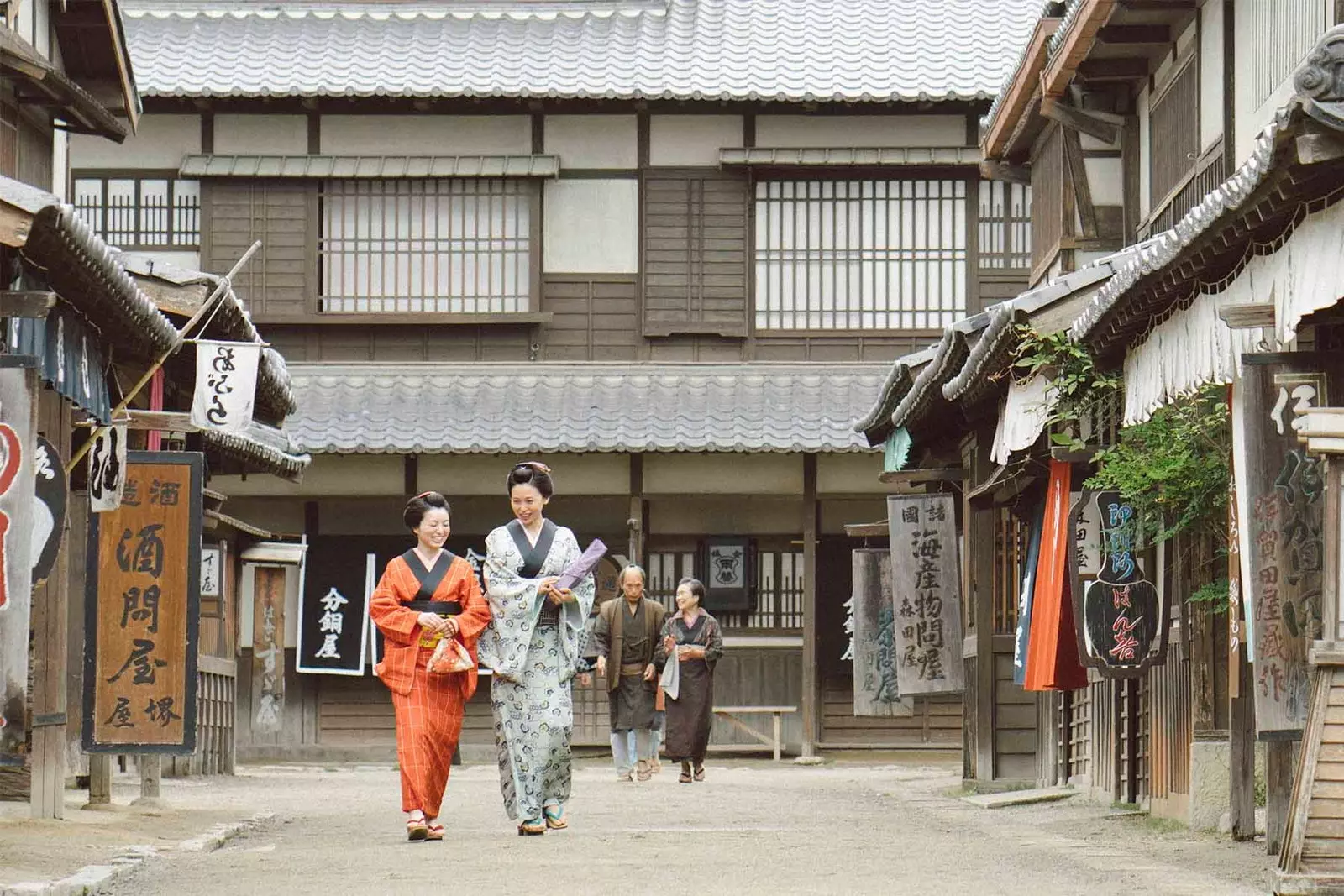
Do like them and you will find happiness
In Japan there is a village that has the world's highest longevity rate . Is named Ogimi, and in it they live centenarians who feel eternally young, as they suffer from fewer chronic diseases than their peers and show an enviable vitality level. But how do they get it?
That's what they set out to find out Hector Garcia and Francesc Miralles , who collect their conclusions in Ikigai, the secrets of Japan for a long and happy life (Uranus, 2016). we give you all keys:
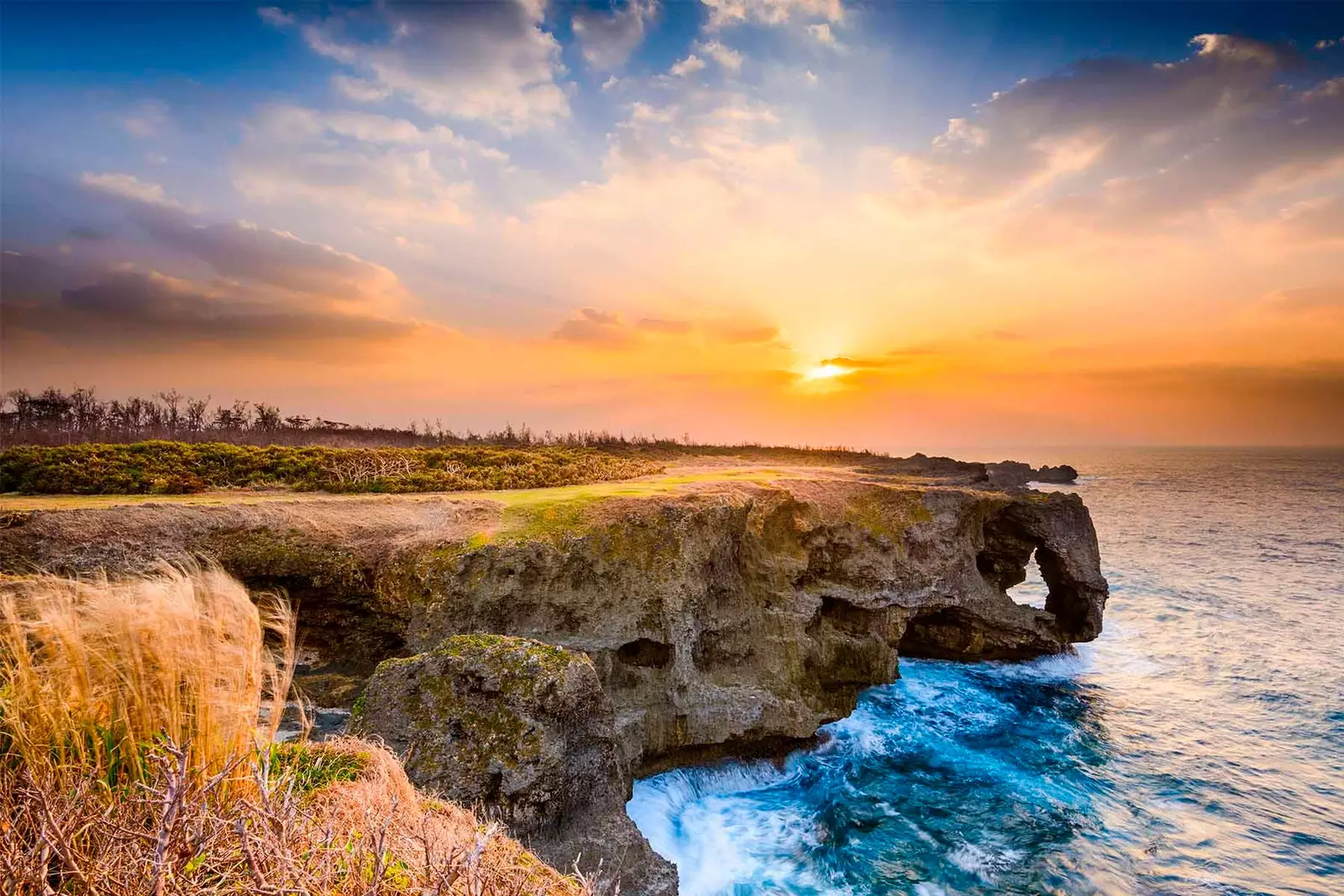
Okinawa, where these centenarians live, is a true paradise...
1. THEY KNOW THEIR IKIGAI, THEIR LIFE PURPOSE
"Ikigai is the reason why we get up in the morning ". This is how the natives of okinawa , the island with the largest number of centenarians of the planet (in which Ogimi is located), the concept that seems to be at the center of his peaceful and long existence. For these elderly, it is essential to have a purpose in life , a reason for being*, which is why they remain active even after retirement.
This is the case, for example, of Hayao Miyazaki, director of the famous Studio Ghibli and winner of several Oscars. "The day after his 'retirement', instead of going on a trip or staying home, he went to Studio Ghibli and sat draw. Co-workers put Poker face , not knowing what to say", is collected in the book. It does not matter that Miyazaki is not a native of Okinawa: this desire to continue working in what one likes is very common in the country, and is closely related to the concept of 'to flow', one of the essential ingredients for experience ikigai.
According to the renowned psychologist and author Mihaly Csikszentmihalyi, creator of flow theory, 'flow' is "the state that people enter when they are immersed in an activity and nothing else matters. The experience itself is so enjoyable that people will keep doing it Even if they have to sacrifice other aspects of life just for the sake of doing it.
*If you want to know your own ikigai , you can carry out the exercises proposed in the manual Find your ikigai (Uranus, 2017).
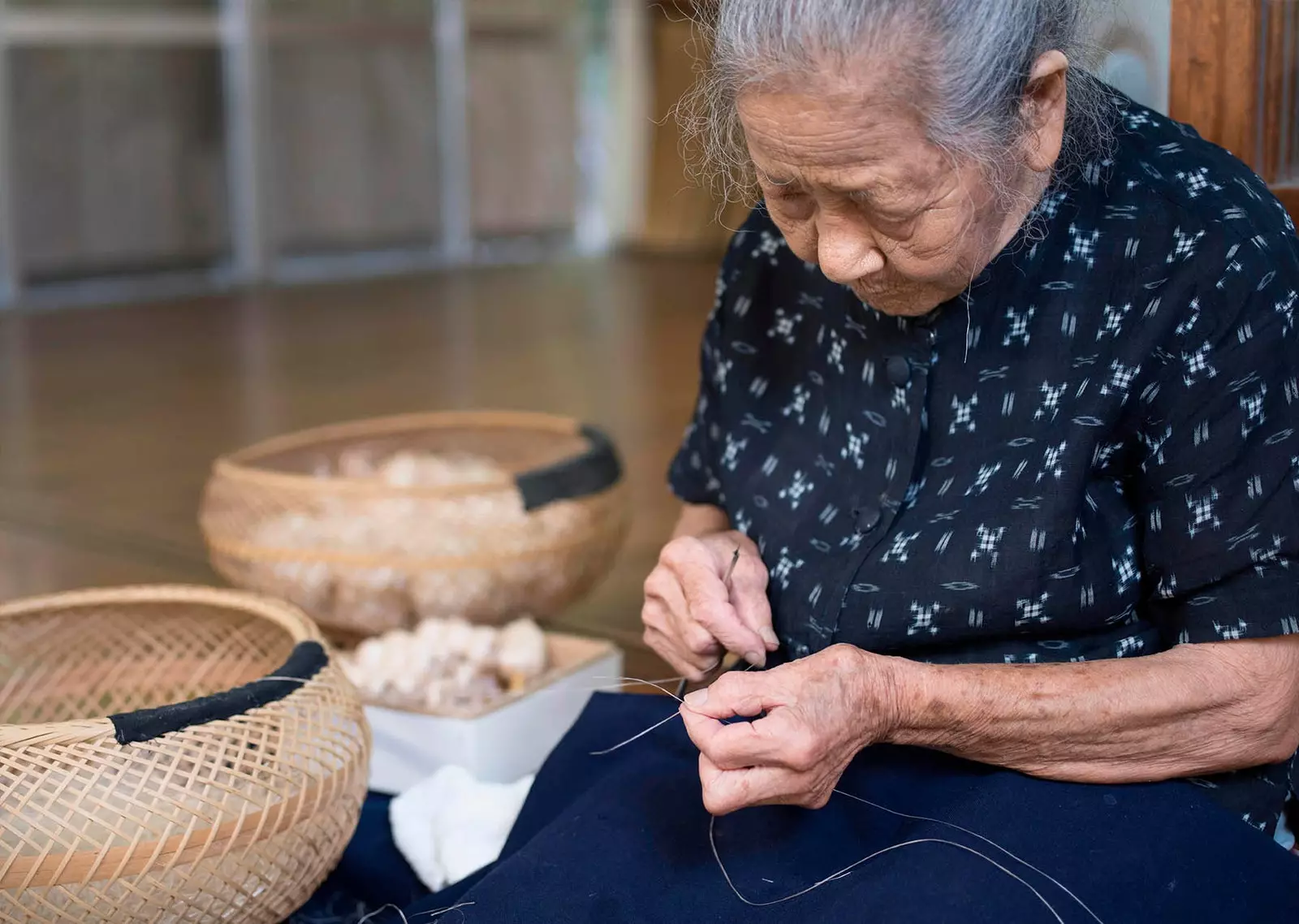
Toshiko Taira, from Ogimi, 'Japan's Living Treasure' for being the only one that continues to produce 'bashofu', a textile made from banana fibers
two. THEY HAVE STRONG RELATIONSHIPS WITH THEIR ENVIRONMENT
In the case of the inhabitants of Ogimi, there is the peculiarity that everyone has a garden , when not large plantations of tea, mangoes, etc. And everyone is dedicated to take care of him until the last of his days. Furthermore, these elders have many other occupations, among which stands out above the rest meet friends and cooperate with the community through the moai, groups of people with common interests who help each other.
The members of the moai have to pay a monthly amount that allows them to attend meetings, dinners, games of gateball (a kind of petanque) or shogi (Japanese chess) , nights of karaoke, or enjoy whatever hobby you have in common. So far, it is quite similar to what we know by rocks . However, the most curious thing about these associations is that the money that is not used for the activities is donated to one of the members, simply to help you.
Thus, if each pays 5,000 yen a month, after two years he could receive 50,000 yen. And after another couple of years, he will be a partner who receives them, unless there is another person who I needed it plus; in that case, the "pay" may be advanced. In this way, "being in a moai helps to maintain emotional and financial stability ", explain García and Miralles.
Likewise, in Ogimi most of the activities work on the basis of volunteering instead of money. "Everyone volunteers to to collaborate and the town hall is in charge of organizing the tasks. In this way, everyone feels part of the community and it can be useful in the town", collect the authors. But not everything is work: also the party and the celebration in common are an essential component of life in Ogimi, and music (singing, playing and dancing) is part of their daily life.
Thanks to these activities, two of the keys that, according to science, contribute to a long and happy life are covered: "Having a purpose in life (an ikigai) and good social connections that is, having many friends and good relationships within the family".
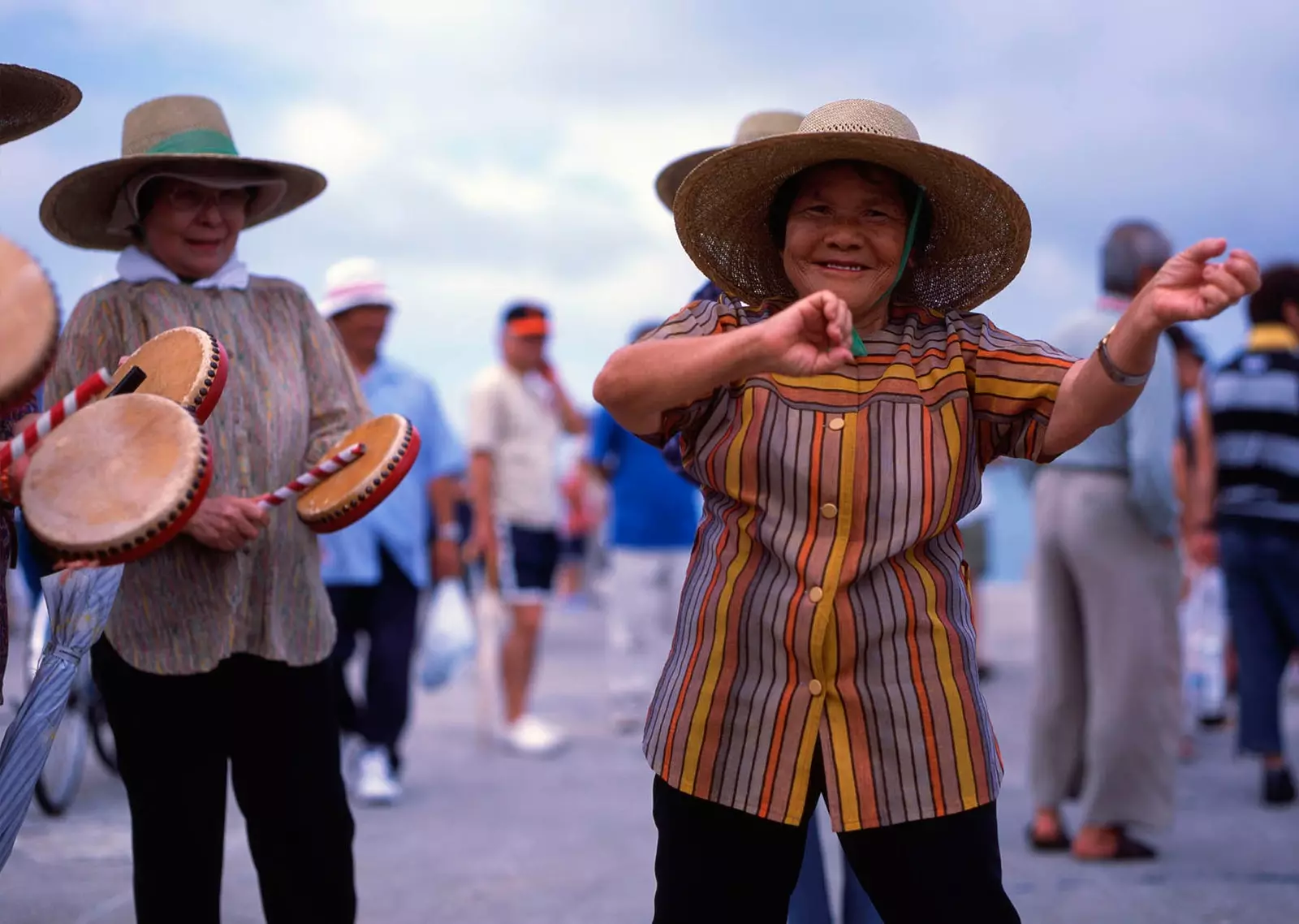
Okinawans love to celebrate
3. GET MODERATE EXERCISE
The mere fact of work in the garden already keeps these elderly people in shape who, in addition, hardly use more transport than his legs -Okinawa is the only province in Japan where there are no trains-. As if that were not enough, most practice some kind of gym , among which stands out, due to its prevalence, the Radio Tasio.
"This type of exercise morning warm up practiced since before the war", write García and Miralles. "What 'radio' It has stuck in the name because the instructions for each of the exercises used to be broadcast over the radio." Today, the Japanese continue to perform these exercise routines. stretching and mobility of the joints, although it is television that broadcasts them. last five to ten minutes and are practiced in a group, for example, before start the classes or the working day in a company. In fact, one of the main purposes of this gymnastics is the reinforcement of the spirit of cooperation and unity of all participants.
Four. THEY EAT HEALTHY
The nutritional routines of the inhabitants of this miraculous island could be summarized as follows:
- consume around 7 grams of salt up to date. In fact, Okinawa is the only province that follows the Japanese government's recommendation to take less than 10 grams daily, in front of the 12 from the rest of the country.
- take one wide variety of food (some 206 different on a regular basis, including spices) . This is helped by the way the food is presented, in several small plates with different preparations, instead of in one big one.
- They eat, at least, five vegetable or fruit plates up to date.
- take a lot antioxidant foods such as tofu, miso, sweet potato, carrots, goya (a bitter green vegetable), konbu and nori seaweed, cabbage, onion, bean sprouts, hechima (a type of cucumber), soybeans, sweet potato, bell pepper, and Sanpicha tea. This infusion, a mixture of green tea and jasmine flowers, taken, on average, three times a day, and has been shown to reduce risk of heart attacks, promotes the immune system, helps mitigate stress, lowers sugar and cholesterol levels, protects against infections...
- consume shikuwasas, a type of citrus that constitutes the main crop from Okinawa and containing up to 40 times more nobiletin than the rest. This substance helps protect against arteriosclerosis , the cancer , the diabetes type two and obesity.
- They have the cereals as the basis of the diet, but they consume them in moderation: thus, in Ogimi it is taken less rice than in the rest of the country.
- They hardly drink sugar In a direct way ( sweets and chocolate are practically not present in their diet) , and if they do, it is cane sugar, grown in their own fields.
- Eat fish an average of three times a week and take meat, almost always pork, once or twice a week.
- ingest fewer calories than in the rest of Japan: 1,785 against the 2,068 nationals. To achieve this, they are governed by the harahachibu, a principle that defends that one should stop eating when one is at 80% of your stomach capacity . Science supports this practice as a longevity factor, because "if the body always has enough calories, or even excessive ones, it becomes lethargic and wears out, consuming Large amount of energy in digesting food," the authors note. In addition, this caloric restriction reduces levels of the protein IGF-1, whose overabundance makes let's get old
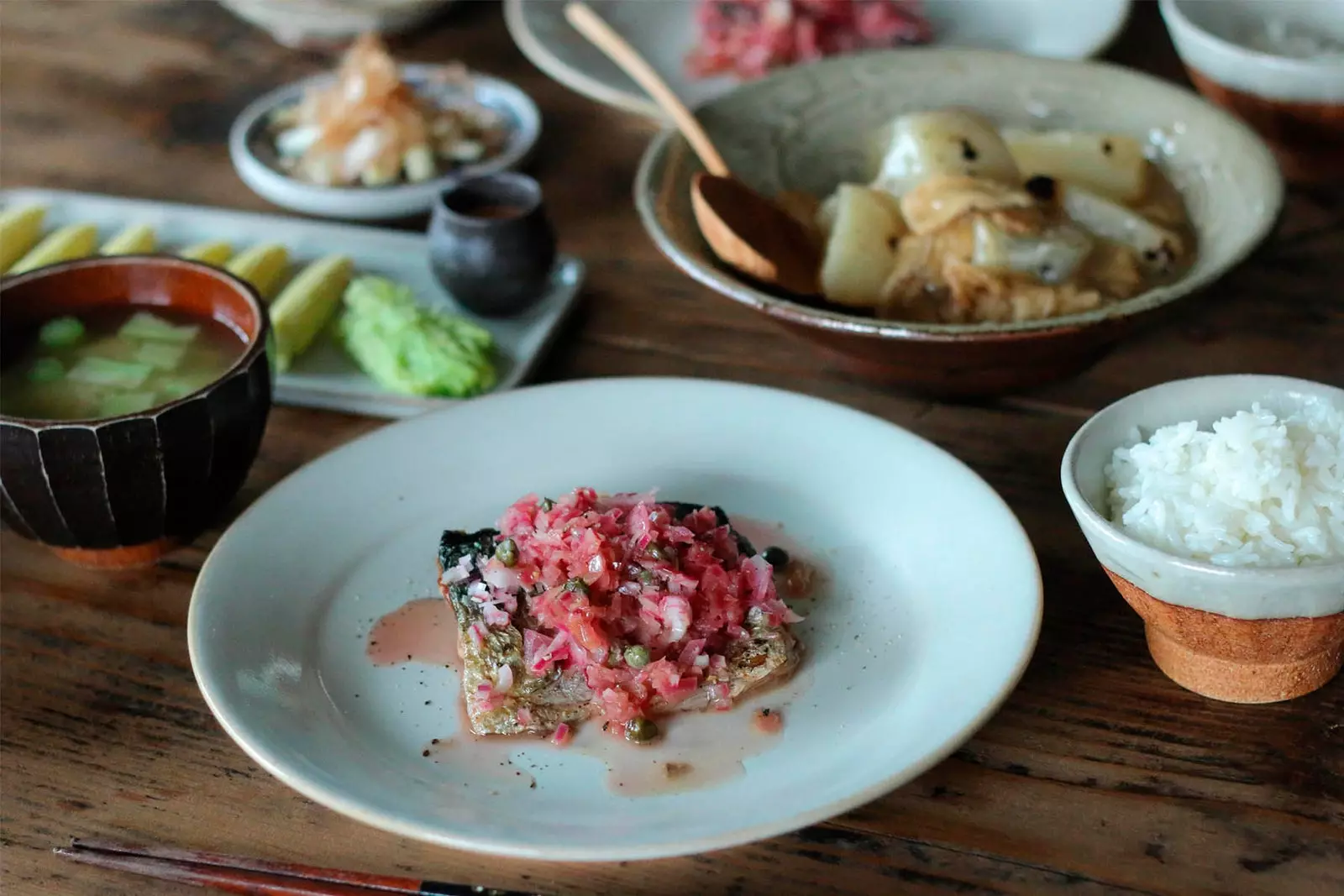
Better to eat in several small plates
5. KEEP A POSITIVE MIND
Okinawans are characterized by their resilience, which is the ability to adapt to the setbacks of fate. "The resilient knows how to stay focused on your goals, on what is important, without getting carried away discouragement "write Miralles and Garcia.
In fact, the island was hit hard by the Second World War, a conflict during which they lost 200,000 innocent lives . Instead of holding a grudge against the invaders, however, Okinawans turn to icharibachode, which advocates that all people should be treated as if were your brothers Even if you just met them.
Likewise, these centenarians lead a stress free governed by high doses of optimism. "My secret to a long life is to always tell myself: 'slowly', 'calmly'. If you don't rush, you live much longer," says one of the Ogimi natives interviewed by the authors. Another explains: "The secret to a long life is dont worry . and have the cool heart Don't let it get old. Open your heart to people with a good smile on face . If you smile and open your heart, your grandchildren and everyone will want to see you ".
In fact, smile is one of the ikigai laws collected by Miralles and García, among which are also counted, in addition to those that we have already mentioned, reconnect with nature, live the moment -without worrying about the past, the future or about what is not in our hands to change-, and give thanks daily . The result, without a doubt, it will be worth it.
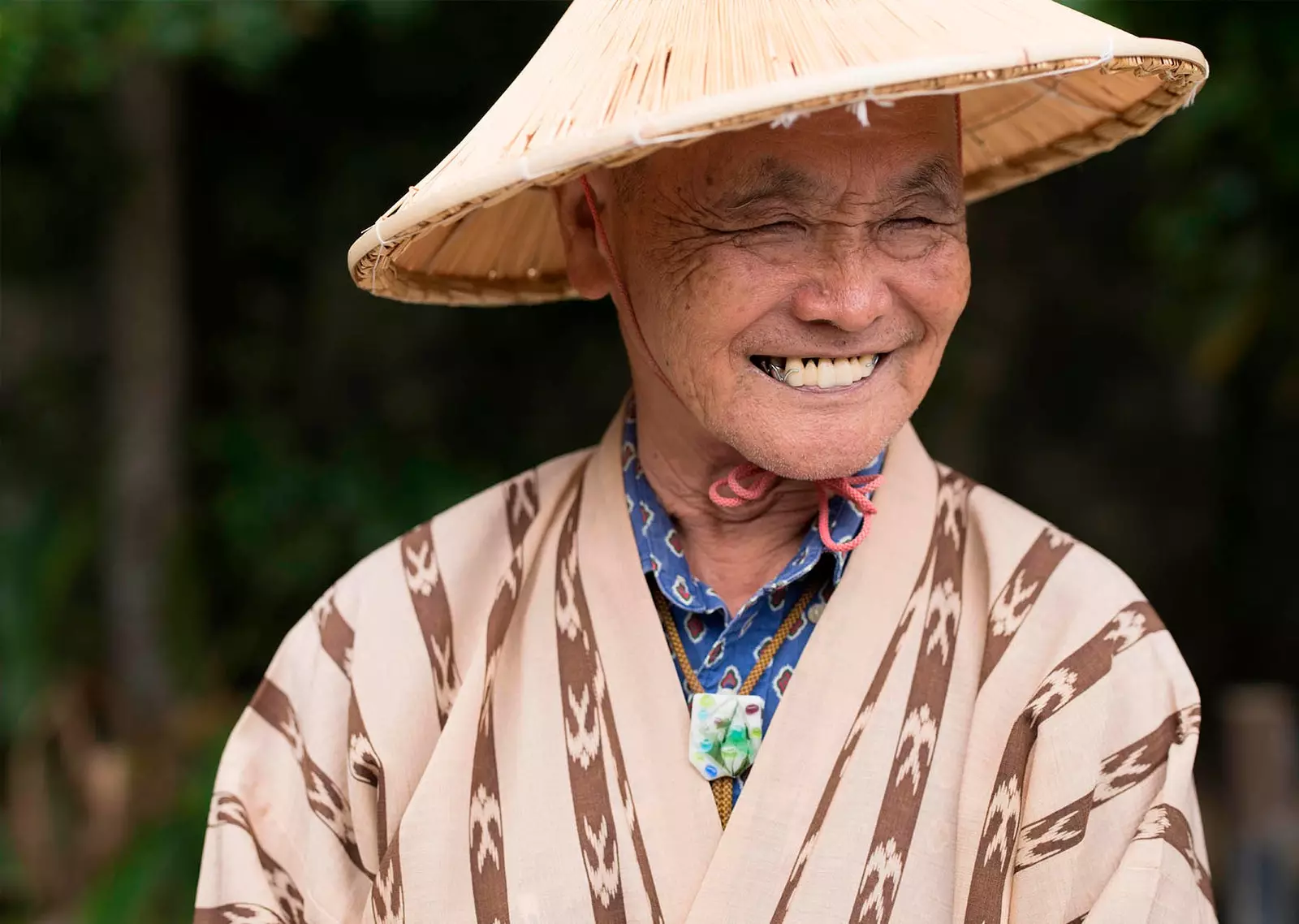
Keep this 83-year-old Okinawan smiling
